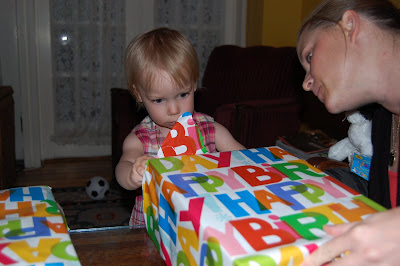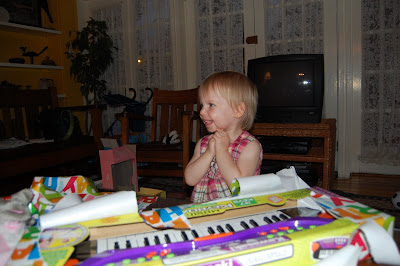Since her Norwood, Zoe's sats have consistently ranged from 80% to 88%, sometimes they creep into the 90s and occasionally they dip into the 70s. Today, however, they were in the lower 70s for significant periods and even dropped into the upper 60s a few times. Her monitor is set up to sound an alarm every time her sats drop below 75%. Needless to say, her alarm went off quite a bit today. In fact, on our walk home from the hospital, which meanders us through the tranquil campus of The University of Pennsylvania, Stacey turned to me and said "I can't get the sound of that alarm out of my head." I knew exactly what she meant, we exchanged a look, and without saying a word to one another, we knew this was another dip on the roller coaster of having an HLHS child.
Now, this could be a benign finding, but one of the primary indicators of inter-stage (the period of time between two of the three operations) problems with HLHS children is a decrease in their sats. Occasionally, a shunt fails, and the blood which was to be redirected from an artery to the lung vessels is not redirected as intended, and therefore the lungs are not receiving the appropriate amount of oxygen. This can be fatal.
If there is time to repair a faulty shunt, an interventional cardiologist can perform a cardiac catheterization and use a balloon procedure to open the shunt or implant a stent to hold it open.
In a stroke of good timing, Zoe was already scheduled to undergo a cardiac catheterization on Tuesday morning. Since our journey home is lengthy, Dr. Spray ordered an investigatory cardiac catherterization to be performed approximately 10 days post-surgery. His thinking, wisely, was if there is a problem with the shunt, better to find out and deal with it prospectively, while we are still in Philly. There is also some heightened concern in Zoe's case, because her shunt had to be revised during surgery, when it became kinked.
We spoke to Zoe's nurse moments ago (it's about 11:00 p.m. here) and she indicated that the sats seemed to balance out a bit, and were holding in the low 80s. That's definitely good news, but we're thankful that the catheterization is scheduled for tomorrow morning at 11:00 a.m. Earlier today, we spoke to the interventional cardiologist, who will perform the procedure. He desrcibed that they will sedate Zoe, and insert a breathing tube in her. Once she is fully sedated, they will insert a thin tube, or catheter, in her groin through a blood vessel or artery. The tube will then be guided, with the assistance of an interventional radiologist, through the torso up to the heart. The catheter will first enter the right atrium - the top right-hand chamber of the heart that receives oxygen-poor (blue) blood from the body. Eventually, the catheter will be guided into the right ventricle, the pulmonary artery and potentially the right and/or left pulmonary artery branches.
While inside the heart, the physicians can use the catheter to obtain blood samples from each chamber of the heart, check the oxygen content of each chamber of the heart, measure the blood pressure from all chambers, and inject dye, to see how it flows through the heart. Lastly, as I said before, if a problem with the shunt is discovered, a stent can be placed to support or reinforce the shunt. The catheterization will tell us if today's low sats were correlated to a problem with the shunt.
There are risks to a catheterization, as there are risks to any surgical procedure. Indeed, the risks increase if some type of intervention is required. The hope is obviously that the procedure provides evidence that the shunt is not compromised and today's decreased sats were simply an aberration, and therefore no intervention will be required. If intervention is required, however, than we are lucky that Dr. Spray ordered the procedure to occur while we were still in Philly.
In other Lihn news tonight, Ms. Emerson turned 2 today! We did not match the gala we threw for her first birthday, but we made sure she had fun. She opened presents.





She ate a birthday brownie.

And she broke in the highlight of her birthday, her new keyboard with a built-in microphone.


Thus far, Zoe has been receiving the lion's share of the credit for demonstrating strength and resolve, every bit of which she deserves. Emerson, however, has also shown herself to be one hell of a trooper. We suddenly whisked her away from the comforts of her home, crib, and playroom and brought her to a weird city, and took up residence in a weird house. Then when Grandma and Grandpa Muenich joined us and Zoe was born, Emerson all of a sudden started spending nearly all her time away from mommy and daddy, while we spend all our time with Zoe. Emerson has seen each of us hold Zoe, and has to know that Zoe is the strange baby responsible for cutting into her time with mom and dad. Through all of that, she has been a champ. I can count on one hand how many tantrums she has thrown since we've been here. She has shown nothing but compassion and interest towards her new baby sister and nothing but patience with her mom and dad. I was already prouder than words can say of Emerson, but her behavior on this journey has been nothing short of remarkable. We are damn lucky to have Emerson and Zoe in our lives.
By the time many of you read this, Zoe will be in the midst of her cardiac catherterization or already done with it. In any event, please send positive thoughts and prayers that Ms. Zoe's procedure goes smoothly and that no intervention is needed. If it is needed, that the doctors perform at the top of their game and the intervention turns out as desired.
Obviously, we will provide updates, when we receive them. Thanks again for all your thoughts, prayers, and supporting words.

The Lihns




No comments:
Post a Comment